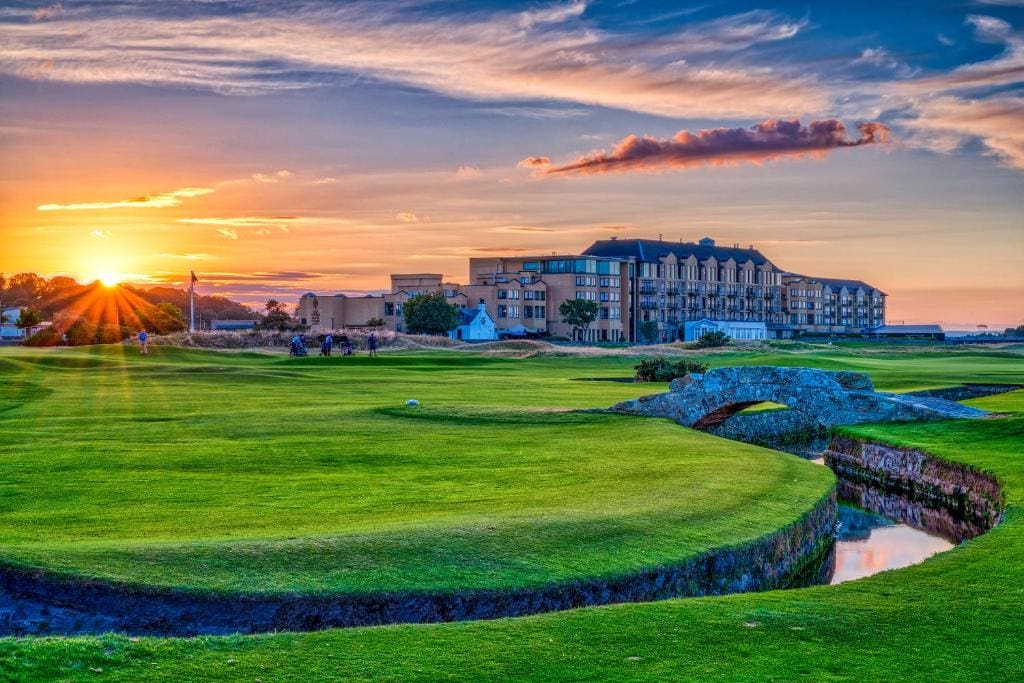Golf is a popular choice of sport for people of all ages. A great form of exercise in the outdoors, an opportunity for socialising, and a focus on accuracy and concentration, it’s no surprise that so many choose to play.
Scotland is widely accepted as the Home of Golf, hosting hundreds of thousands of visitors every year as people flock to see where golf originated and to play on some of the most famous courses in the golfing world.
Golf tourism is estimated to bring in almost £300 million to Scotland annually. Despite people travelling from all over the world to experience golf at its core, by far the largest of the overseas markets was the USA, which accounts for 17% of visitors overall and 27% of overnight visitors.
From St Andrew’s to Augusta, golf courses are one of the most iconic elements of the sport, enjoyed by those who play and even by those who don’t. Many believe Scotland is truly the home of golf, and the oldest golf course in the world is the St Andrew’s Links. Dating back to the 15th century, St Andrew’s is considered to be one of the finest and most prestigious golf courses around.
Being a public course, St Andrew’s can be played on by anyone, with reasonable green fees for such an iconic location, it’s unsurprising that so many gather in the Fife town every year.
St Andrew’s is a must visit for any golf fan, with The Royal and Ancient Golf Club of St Andrews is one of the oldest clubs in the world and provides the rules of golf everywhere except in the U.S.A. and Mexico where the U.S.G.A provides the rules instead. Established in 1754 as a local club that played the course and in 1897, it codified the rules of golf that are still followed today.
While the exact details of the origins of golf are not clear, it is commonly accepted that the modern game of golf originated in Scotland during the middle ages, with the first golf courses and clubs created within the country. The first written rules of the sport originated in Scotland too, including the establishment of the 18-hole course. With proof of the sport existing in Scotland since the 15th century, it’s fair to accept that Scotland was the birthplace of golf. In fact, in 1457, golf was banned by parliament as it was deemed to be a distraction from military training!

The earliest known reference to golf was the purchase of a set of golf clubs by James IV in Perth in 1502. It’s not known for certain where he played, but many assume it would have been on the North Inch at Perth. During the same period in 1552, John Hamilton, the Archbishop of St Andrew’s, granted the right to play golf on the links to the population of St Andrew’s. Mary, Queen of Scots is said to have played on Musselburgh Links in 1672. In the following centuries, golf was spread by Scots to the rest of the world!
Golf is popular both to watch on TV and to play. It’s estimated that 450 million people consider themselves golf fans, meaning they either attend competitions as spectators, occasionally play the game or watch golf on TV.
In terms of demographically who is most likely to play golf, around 77% of golf players are male, with most over the age of 54. However, the sport is gaining popularity among younger participants, as well as more women taking up the sport too. In Ireland, golf is the most popular proportionally to its population. The second country where golf is most popular is Canada, where the sport is mainly played during the spring and summer months when the weather is nice.
Overall, Scotland is rightly regarded as the Home of Golf. With deep historical roots and significant societal and cultural ties to the nation, a visit to Scotland is essential for any golf fan.


